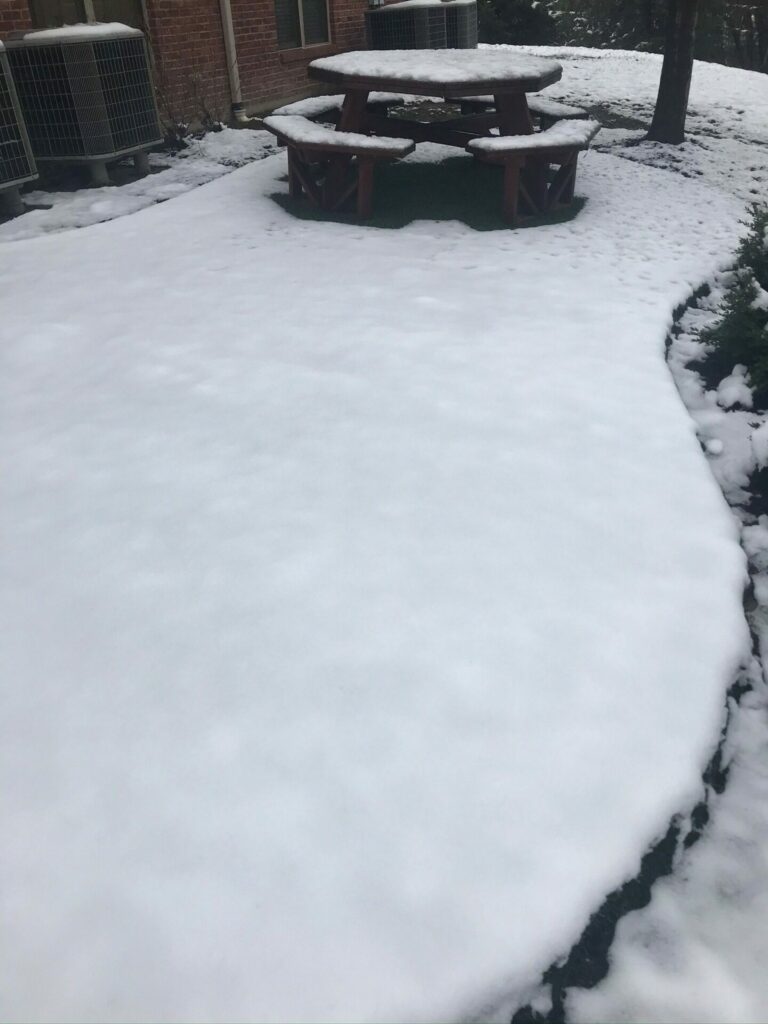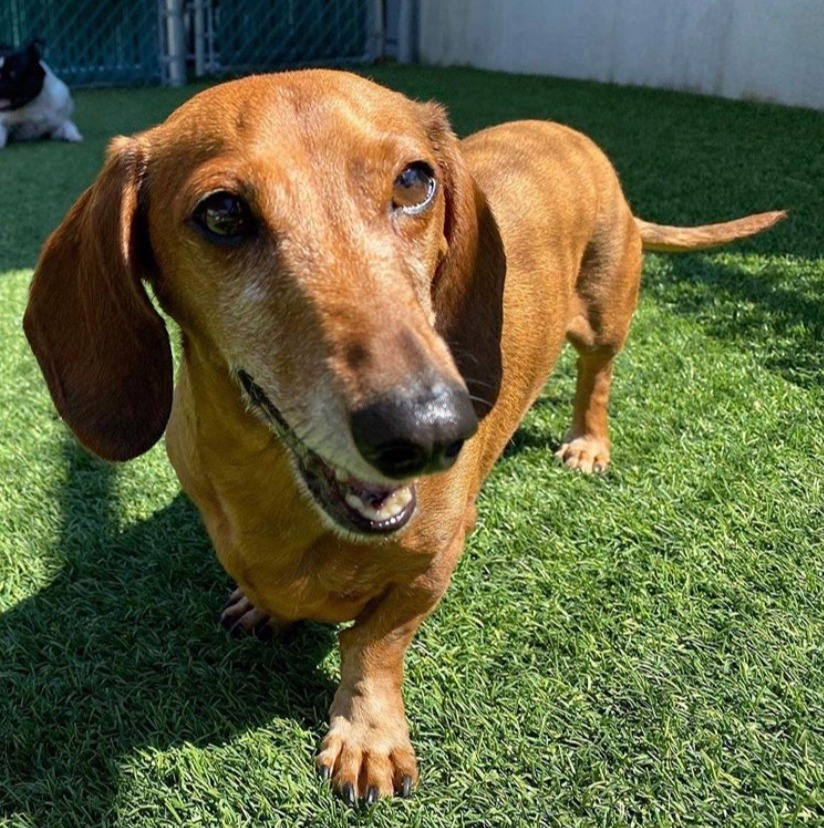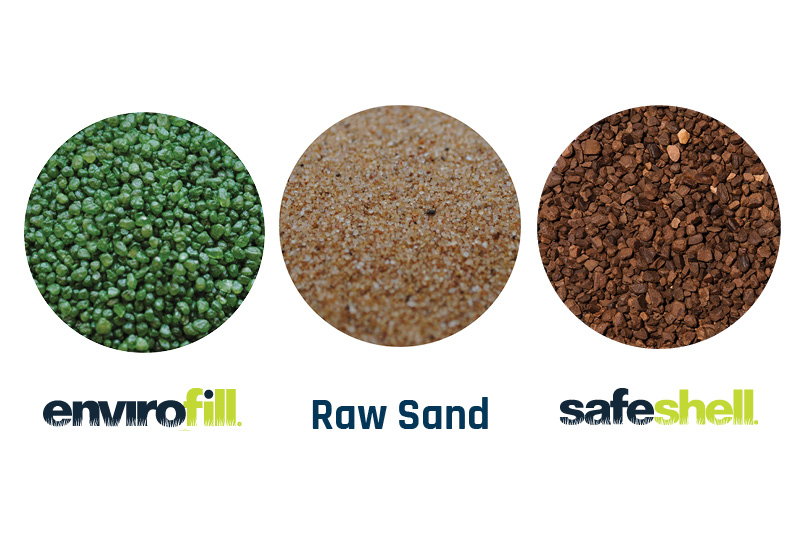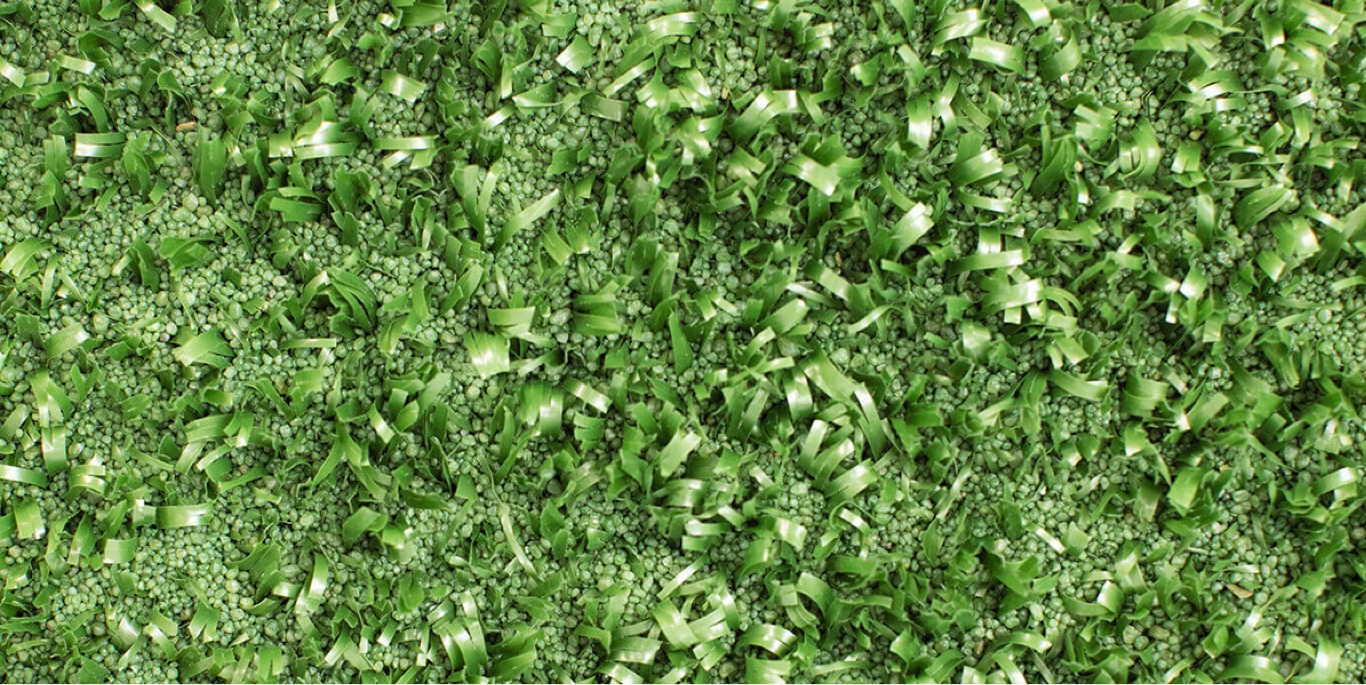
Infill Landscape Blog
Subscribe To Email Updates
Subscribe to our weekly newsletter and we’ll send updates straight to your inbox
Reviving Flat Artificial Turf: Tips for a Lush, Upright Lawn
There’s nothing quite like the neat, low-maintenance beauty of a well-scaped synthetic turf yard. Perfect for busy homeowners who want curb appeal without the fuss of monitoring grass growth and worrying what the weather will do to your landscaping, an artificial turf backyard or front yard (or both!) lets you trade that weekly upkeep for more time spent enjoying your outdoor space. And shouldn’t that be the goal?
With artificial turf, this feeling of easy enjoyment can be one that sticks around. Well-installed artificial grass landscaping is built to stay looking beautiful — rain, shine, or drought — for 20 years or more. But as famously low-effort as artificial turf is, there are some simple steps you should be taking to keep your artificial turf fibers looking fluffed and fresh.

Over time, It’s only natural that you may start to notice your outdoor artificial grass becoming a little flat in appearance. When this happens, your turf fibers are laying horizontally and have lost some of their ability to stay upright, giving the lawn an unkempt appearance. So, if your turf is flat, how do you get it to stand up again?
To fix flat artificial grass, the first thing we recommend is going below the surface and assessing the state of your synthetic turf infill. Why? We’ll dive into that next. And after, we’ll walk you through a few other tools anyone looking to learn how to refresh artificial grass should add to their turf-care toolkit, including our thoughts on artificial grass power brooms and brushes and how often you should use them.
Below, you’ll find answers to:
What is Synthetic Turf Infill, and What Does It Have to Do With Fixing Flat Artificial Grass?
Artificial turf infill is the layer of product installed between the fibers (or blades) of your artificial grass system for support, performance, and aesthetics. It essentially plays the role that dirt, rocks, and other sediment would in a natural grass lawn. Only, infill materials run the gamut, from silica sand — the most common infill in residential applications — to cork, walnut shells, and even the ground-up rubber soles of tennis shoes.
No matter the material used, infill works to keep turf fibers upright, giving the surface of your synthetic turf a full and luscious look. Without turf infill to help the fibers stand up, turf is more prone to blades breaking and fraying, and it’s also a lot more likely to become matted. (Picture a shag carpet that’s been tread on for years — not the freshest looking, right?) With artificial grass, that matted-down effect can make your turf’s surface appear shiny and, well, artificial.
A good artificial turf infill helps prevent that, and it’s also key to ensuring your outdoor artificial grass drains well, warding off pooling, backlog, and mildew. Those water-born issues will contribute to your artificial turf looking matted and can also lead to uneven turf surfacing that wrinkles, contracts, or expands with the elements — something the weight of a quality, evenly applied, and well-draining infill product will counteract.
It follows, then, that if there’s something wrong going on at the top of your turf (the artificial grass fibers), something needs to be done about what’s on the bottom (the infill).
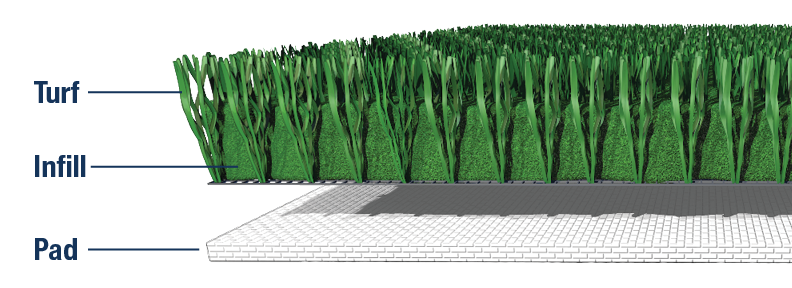
Low or Inconsistent Infill Depth is the No. 1 Cause of Flat Artificial Grass — Here’s Why
The main reason turf fibers flatten and lose the ability to “stand” vertically like natural grass does is low turf infill depth. Here are two common reasons we see lawn owners run into this problem.
- Often, installers don’t add enough infill to brand-new turf systems. That’s sometimes due to installers incorrectly calculating the turf-to-infill ratio (we’ll look at the right ratios soon). Other times, it might be an attempt to cut costs or save time. No matter why it happens, a turf installation with too-little infill can leave you with flat artificial grass right from the beginning.
- Infill levels naturally settle and material can be displaced over time, especially in highly trafficked areas of your yard. Have kids or pets? Small running feet and paws are known to move infill around. You’re also more likely to see movement in your infill levels if you live in a region with four seasons and lots of precipitation, too. Bear in mind, that’s going to be less movement than you’d see with dirt or mud in those same environments, but it’s still something to be aware of.
Starting off with a low-maintenance, durable infill in the proper amounts will keep your synthetic turf lawn in better shape over time and help you solve the puzzle of how to make artificial grass stand up. But just how much infill do you need?
How Deep Should My Infill Be?
To keep your artificial grass turf fibers standing upright, it’s important to monitor your infill and replenish or top it off as required, especially in high-traffic areas. Before installing an artificial turf backyard, check out these infill depth recommendations from experts at the Motz Group. You’ll see they use Envirofill — our innovative infill that’s low maintenance, reusable, and infused with antimicrobial technology — as a template.
| Envirofill Size | Turf Pile Height | Turf Spec | Depth | Lbs. Per Sq. Ft. |
|---|---|---|---|---|
| 30/50 | 1/2″ | Texturized PE/Nylon | 7/16” – 1/2″ | 1.5-2.0lbs |
| 30/50 | 5/8″ | Texturized PE/Nylon | 9/16” – 5/8″ | 2.0-2.5lbs |
| 20/40 | 5/8″ | Texturized PE Tennis | 5/8″ – 11/16″ | 2.5lbs-3lbs |
| 16/30 | 1-1¼” | PE/PP Putting | ¼” (Top dressed) | .25-.5lbs |
| 12/20 or 16/30 | 1-1¼” | Pet/Playground | ⅜” – ½” | 1.5-2.5lbs |
| 12/20 or 16/30 | 1½ – 1 ¾ | Landscape | ½” – ¾” | 2.5-3.5lbs |
| 12/20 or 16/30 | 1⅞” – 2 ¼” | Landscape | ¾” – 1” | 3.5-4.5lbs |
How Regularly Should I Replace My Infill?
A good rule of thumb is to replenish or replace your synthetic turf infill at least every 18 months, but keep an eye on your yard to see if you need to do it sooner. If you wait too long to top off or replace your infill, the quality and long-term durability of your artificial turf could be the cost.
Low, inconsistent infill levels will leave your outdoor artificial grass looking matted, worn down, and damaged, and unfortunately, once the condition of your turf has declined to a certain point, there’s no getting 100% of its former quality back. Preventative maintenance, including monitoring and restoring your infill levels, is the best way to avoid this situation and protect the longevity of your lawn. Consider having a couple of bags of your selected turf infill stored in your shed or garage at all times to replenish levels as needed.
What About Replacing My Synthetic Turf? If It’s Flat, Do I Need to Throw It Out?
More than likely, that isn’t necessary. Generally, artificial turf only needs to be replaced if it’s at the end of its shelf life (20-25 years) or if sizable damage has occurred (examples: your turf is torn or parts of your turf system melted after coming into contact with extreme heat, like fallen coal from a grill). While it’s important to stay on top of maintenance and proactively keep your turf from getting matted, a cosmetic flaw like flat grass can be fixed with a little infill and elbow grease. (If you’re wondering exactly how to fluff up artificial grass that’s become flat or matted, we’ll cover that step-by-step soon!)
Does Laying Heavy Objects Like Lawn Furniture Make My Artificial Grass Flat?
Many heavy items, like lawn chairs, are commonly placed on synthetic turf yards, and that’s OK. However, furniture with sharp edges will puncture the turf. And if you leave bulky or heavy objects in the same place over extended periods, it will cause the turf to lay flat, and the objects will leave imprints.
The best practice is to move objects around on the turf frequently to prevent flattening and to fill your infill to the top of the turf fibers in areas where the furniture will be placed. If you find a flat spot in your turf from furniture, equipment, or other large items, watch the short video below to learn how to refresh artificial grass.
6 Steps to Get Your Synthetic Turf to Stand Tall Again
Now you know how important synthetic turf infill is in preventing outdoor artificial grass from flattening. But what if you’re dealing with turf that’s already flat? How do you add infill in a way that keeps turf for backyards smooth while giving you the texture and dimensionality of fluffed-up grass?
To fix flattened fake grass, try the following, and make these steps a proactive part of your artificial turf backyard’s care at least once a year.
1) Brush Your Lawn:
To help your turf fibers stand at attention, use a stiff brush or artificial grass power broom with nylon bristles across your artificial turf surface. If additional infill needs to be added, a broom or brush will help “open” your turf’s surface so that the infill granules have an easier entry in between the fibers. You could also use a Grandi Groom, which is a specialized grooming rake used commonly in the carpet cleaning industry as well as on artificial turf backyards.
When is it best to use each of these three tools? Some of that will come down simply to which ones you have on hand. If you have the ability to choose between all three, though, here the advantages of using each:
- Power broom: A power broom is ideal for large turf applications, like an entire backyard that needs to be revived. If your turf fibers are heavily matted or if your infill has become compacted, a power broom provides the necessary force to rejuvenate your turf, helping the infill levels settle and lifting the turf fibers for a fresh, fluffed look. Power brooms are also great for deep cleaning — say, if your outdoor artificial grass could use a little TLC after autumn leaves have fallen.
- Grandi Groom: More efficient than a manual brush but with a bit less horsepower than a power broom, a Grandi Groom is a good middle-path option. They’re useful for medium-sized lawns and for regular upkeep, as well as for redistributing infill and lifting turf fibers in high-traffic areas.
- Brush: A manual brush is perfect for smaller areas and spot treatments, such as lifting back up flat artificial grass after a lawn chair has rested on it. Keep one around for routine brushing, minor repairs, and for cases when a more gentle touch is needed. If your turf carpet is only flat in a small area, use the brush in that area and then jump to step three.
2) Check Infill Depths
Check your infill depth with an infill gauge. When using the infill depth gauge, make sure that you review infill depth guidelines to know how much infill you should have in your system. If your infill is extremely low throughout the entire system, download these installation guidelines and follow the steps to add a consistent layer across your entire turf system.
3) Top Off Your Infill
If you only have a few low-infill areas, start off by adding handfuls of infill into specific spots with lower levels. If you own one, you could use a drop spreader for this, but adding infill by hand works just fine, too! Apply a thin layer at a time to avoid overfilling, as both too little and too much infill can lead to matting and cosmetic issues with your turf. (FYI: Too much infill can also impede drainage and counteract the cushioning effect that synthetic turf infill is meant to provide, leaving you with an uncomfortably hard or even unsafe turf surface.) In especially high-traffic areas, like pet play areas, you may need to top off your infill levels every three to six months.
4) Work the New Infill Into the Turf Fibers
After more infill is added, use your broom, Grandi Groom, or a small artificial grass brush to work it into the turf. As you do this, brush or drag your chosen tool against the grain of the fibers first to help lift them and allow more infill to get securely to the base. Then, brush in all different directions to give your outdoor artificial grass a natural and fluffed-up look and to ensure the infill is evenly distributed.
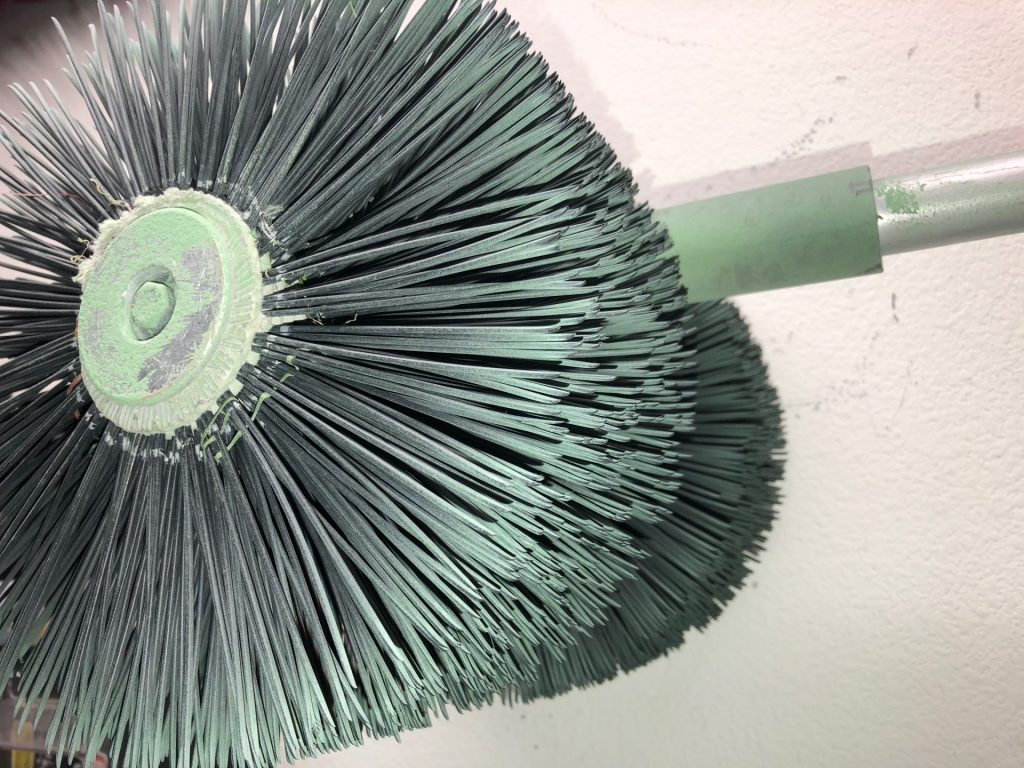
5. Check That Your Turf Blades Are Now Vertical
Once completed, the grass blades should appear vertical (there might be a slight angle) and consistent across the surface. You can do this with a quick visual inspection, or try running your hand over the surface of your synthetic turf in different directions. The turf fibers should feel relatively stiff and resilient, and if you press down lightly on them, the blades should bounce back up immediately when you release pressure. If you do this and are left with flat artificial grass in that spot, or if some areas of your turf system still appear flat or matted, more infill may be needed.
6. Finish With a Quick Infill Depth Check
Finally, use the infill measuring device again to confirm the proper recommended depth and repeat these steps if necessary.
Get the Best Turf Infill for Yard and Home Landscaping
As we talked about before, Envirofill and Safeshell are two of the most popular synthetic turf infills in residential artificial grass applications, and for good reason.
Got pets? Get Envirofill. It’s the cleanest and most innovative infill choice for families with children and pets. That’s because you can combat stains, smells, and bacterial growth with Envirofill’s infusion of Microban antimicrobial product protection, giving you an outdoor space you can feel good about letting loved ones roll around on. And beyond infill, know that the type of turf grass you choose for your yard and home landscaping project is just as important. Discover the best artificial turf for your dog here.
Alternatively, if you’re committed to creating an artificial turf backyard with the lightest environmental impact, Safeshell is the gold standard. It’s an organic, nontoxic infill made from a proprietary blend of ground walnut shells (but don’t worry – it’s allergen-free). Domestically sourced, Safeshell offers high-quality, low-maintenance turf landscaping that’s long-lasting and earth-friendly.
Questions about your home’s artificial grass? Ask our infill experts!
Similar Blogs
